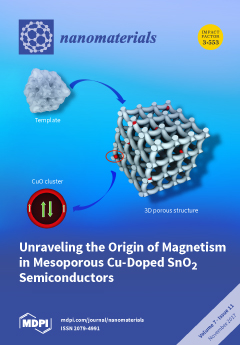1
Institute of Biological Science (ICB), Federal University of Rio Grande, Rio Grande, RS 96270-900, Brazil
2
Department of Coatings and Polymeric Materials, North Dakota State University (NDSU), Fargo, ND 58102, USA
3
Department of Systems and Computer Engineering, Carleton University, Ottawa, ON K1S 5B6, Canada
4
Computer Science School (ETSIINF), Polytechnic University of Madrid (UPM), Calle de losCiruelos, Boadilla del Monte, 28660 Madrid, Spain
5
Biomedical Informatics Group, Artificial Intelligence Department, Polytechnic University of Madrid, Calle de los Ciruelos, Boadilla del Monte, 28660 Madrid, Spain
6
Department of Organic Chemistry II, University of the Basque Country UPV/EHU, 48940 Leioa, Biscay, Spain
7
IKERBASQUE, Basque Foundation for Science, 48011 Bilbao, Biscay, Spain
8
INIBIC Institute of Biomedical Research, CHUAC, UDC, 15006 Coruña, Spain
9
RNASA-IMEDIR, Computer Sciences Faculty, University of Coruña, 15071 Coruña, Spain
Abstract
This study presents the impact of carbon nanotubes (CNTs) on mitochondrial oxygen mass flux (
Jm) under three experimental conditions. New experimental results and a new methodology are reported for the first time and they are based on CNT Raman spectra
[...] Read more.
This study presents the impact of carbon nanotubes (CNTs) on mitochondrial oxygen mass flux (
Jm) under three experimental conditions. New experimental results and a new methodology are reported for the first time and they are based on CNT Raman spectra star graph transform (spectral moments) and perturbation theory. The experimental measures of
Jm showed that no tested CNT family can inhibit the oxygen consumption profiles of mitochondria. The best model for the prediction of
Jm for other CNTs was provided by random forest using eight features, obtaining test R-squared (
R2) of 0.863 and test root-mean-square error (RMSE) of 0.0461. The results demonstrate the capability of encoding CNT information into spectral moments of the Raman star graphs (SG) transform with a potential applicability as predictive tools in nanotechnology and material risk assessments.
Full article






